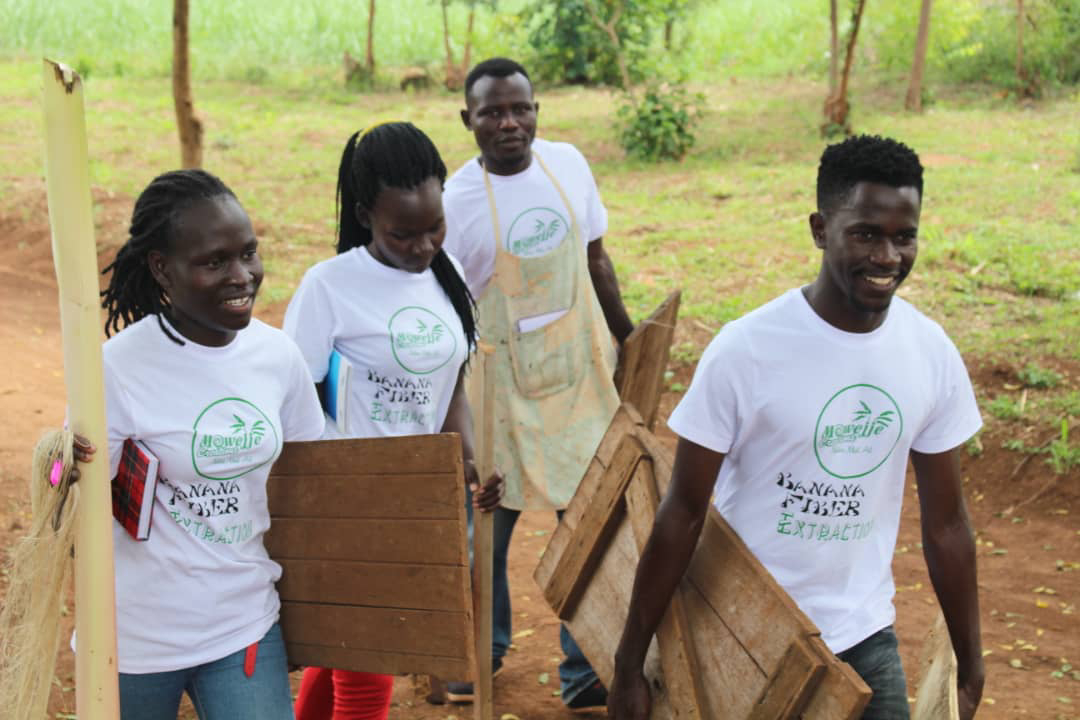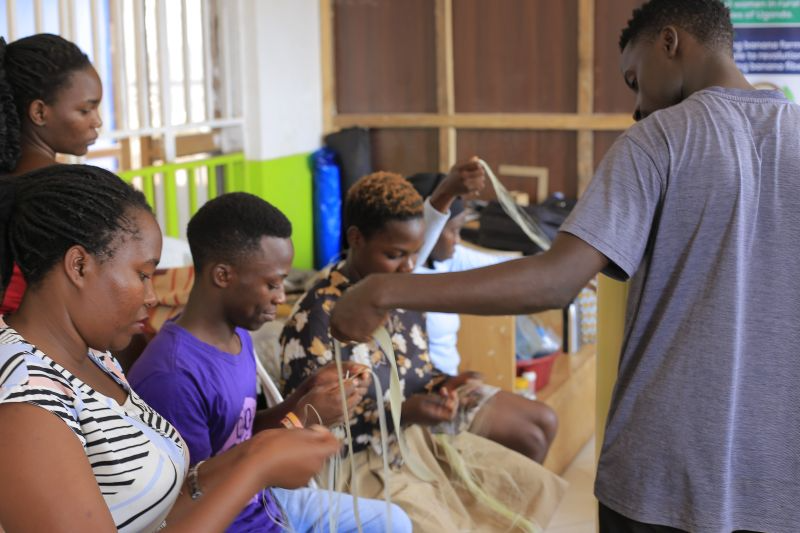
 Mawejje creations
Mawejje creations

Uganda was one of the first countries to sign and ratify the United Nations’ Framework Convention on Climate Change (UNFCCC), a blueprint for climate action.
Uganda also is among a handful of African countries — among them Kenya, Tanzania, Rwanda and Burundi — looking to lead a potential secondhand textile import phase-out. Facing threats of long-term heat stress (which in turn destabilizes crops and jobs), the country’s leadership saw increasing reason to act on climate change.
In that same spirit, young Ugandan entrepreneur Muhammad “Dimma” Mawejje is working to transform Uganda’s plentiful banana fibers into a transformative economic incentive in hopes of revolutionizing fashion.
WWD: How are you defining your climate work in your own terms?
Dimma Mawejje: I’m Dimma, and I’m on a mission to revolutionize the fashion industry using banana fibers. I created Mawejje Creations, a social enterprise, back in 2018 with a goal to empower the Kampala community of farmers and younger people through banana fiber production, extraction and hands-on skills training.
Our innovative “Commune Fabric” is the first Ugandan durable, technical fabric made purely from the naturally wasted banana plant, which is highly found in Uganda. Within a natural ecosystem of sustainable mixed agriculture, the plant is self-sufficient and requires no pesticides, fertilizer or extra water. These qualities have allowed it to contribute to food production. “Commune” stands for a community with shared values, beliefs and resources in common for a greater vision and responsibility.
For the past three years, Commune Fabric was born as an innovative material that answers questions of environmental, economic and social sustainability. Commune Fabric offers a truly circular alternative to the plastic-made fabrics that dominate the market today in the fashion industry. Commune Fabric was developed [by Mawejje Creations] in collaboration with the local community, and a weaving specialist based in Uganda. Our Commune Fabric is incredibly strong and durable while remaining soft, lightweight and supple. The off-white colorway reflects the actual color of the fibers and is not dyed. The resulting fabric has a woven and distinctive hand-feel.
WWD: Where have you helped motivate the biggest push or change in fashion?
D.M.: Our research showed that almost 60 percent of banana biomass is left as waste. Worldwide, about 114 million metric tons of banana waste-loss are produced, leading to environmental problems such as the excessive emission of greenhouse gasses. On top of that, 92 million [metric tons] of textile waste is produced every year. The number of fast-fashion waste is expected to soar up to 134 million [metric tons] a year by the end of the decade [according to estimates cited by the Global Fashion Agenda].
By creating an eco-friendly, chemical-free, energy-efficient, water-saving fabric that we use for designing outfits, earrings, shoes and bags, we [envision] circularity.

WWD: What is the future you are imagining, and how do we get there? What role does each party play, and why should the fashion industry pay attention?
D.M.: We raised over $25,000 from grants and revenue in 2021 to 2022, and we recycled nearly two [metric tons] of banana fibers. We sold over 800 products from 2021 to 2022. There’s a rise of banana fiber-made fabric solutions that are now making it to big brands such as Ganni with Pyratex. We believe our product is a great alternative to traditional carbon-intensive fabric production because it turns waste into material while supporting the local community and economy; it offers net-zero alternatives. It is both good for the planet, and the workers.
The fashion industry is starting to pay attention. However, currently our solution hasn’t made it to production processes with the large suppliers, but that’s our ambition.
WWD: How are you dealing with the newfound spotlight your brand has afforded?
D.M.: Currently, I am able to handle this simple spotlight because we have been able to extend a supporting hand to different communities in Uganda, especially women and children through the Hands-On Skills Training and Education For All Program.
WWD: Who is your dream brand collaborator, and what advice do you have for forging meaningful partnerships today?
D.M.: I would love to collaborate with Ganni or Stella McCartney, a lighthouse brand committed to transforming their supply chain and making circular, climate-neutral solutions the core of their operations.
My advice would be to get connected with a mentor or an organization that can help facilitate connections with countries where the fashion leaders are based. Being in Uganda means reaching out to those companies can be challenging. In my experience, taking part in innovation grants and programs like the Young Climate Prize [a competition for young innovators from The World Around, a global nonprofit platform making architecture accessible to underprivileged groups] is key to achieving that next level of visibility and engaging with the right actors across the globe.
 latest works
latest works 